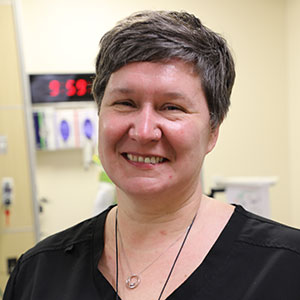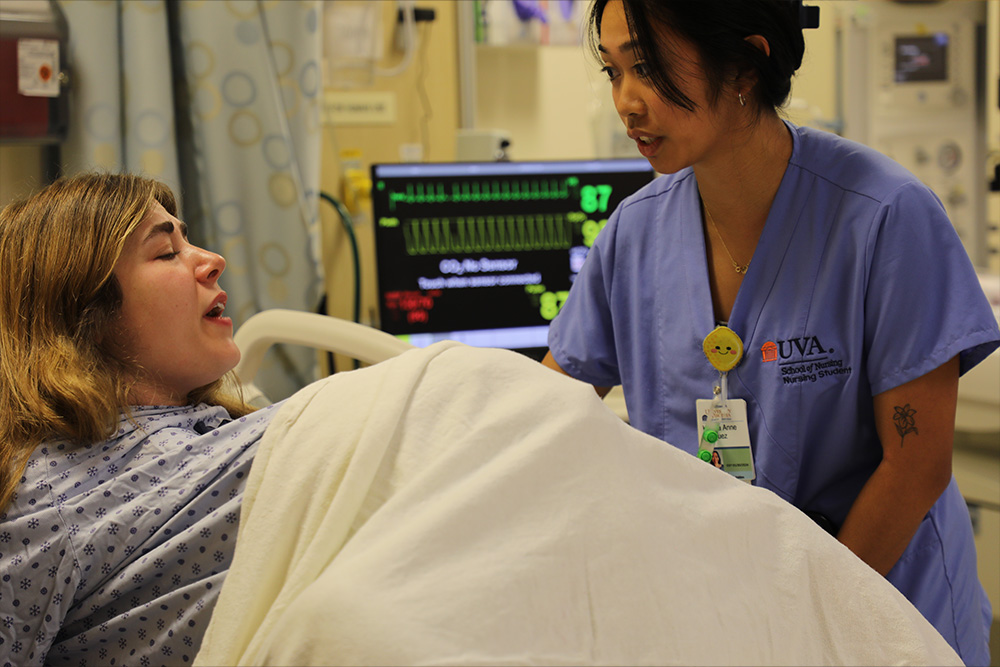
Hey, Baby
The contractions are coming fast.
“Sim is just real enough that one can feed off the energy of the room that comes from a screaming patient and a baby that is being pushed out, but there is the safety net of working together with one’s peers and knowing that this is a learning experience at the end of the day.”
Jude Diederich, rising 4th year BSN student
The patient—a 33-year-old mother of three already panting in unison with the monitor—moans, strains, and starts to cry and hiccough. She’s sweating. Her partner grasps her hand as three student nurses maneuver around them, coo reassurance, pull back bed sheets to check her progress, and ready the infant warmer.
The moans get louder. Before long, the baby’s head begins to crown. The students phone the midwife and tuck fresh pads under the patient’s bottom to absorb the mix of fluids. The pushing has started.
Standardized patient actor Abagail Collins has given birth to this baby more than 20 times since spring—a six-pound infant boy with eyebrows so pronounced the students call him “Groucho”—but each birth is a little different. Collins has screamed, pleaded for pain relief, hemorrhaged, and passed out. She’s delivered the placenta in pieces, requested the use of scented oils, and skin-to-skin contact with her baby. She’s taken selfies with her nurses from the hospital bed. Students say the simulation is the next best thing to a real live birth, and head and shoulders above what Noelle, the birthing mannequin, offers.
[VIDEO] A Look Inside the New Birthing Sim
Between simulations, the $65,000 mechanized belly strapped to her torso, Collins swaps stories with simulation educator Rob Craig, who compliments her crying as he lubricates the infant with mineral oil to aid its progress through the birth canal. Collins uses these breaks to check her phone, re-braid her hair, and steady herself. When clinical instructor Jennifer Gaines pokes her head in the delivery room again, winking at Collins, who gives her a thumbs up, it’s go-time again. A second wave of prelicensure students prepares to tend the next birth getting their bedside assignments. Gaines reminds them: “Take a deep breath.”
Collins, a Johns Hopkins University graduate and diplomatic attaché, has worked as a standardized patient actor with medical students since college. It’s only recently that she’s joined the School’s cadre of standardized patients and discovered a penchant for this labor and delivery sim—and an affection for nursing students like Emma Flint, Jude Diederich, and Keisha Enriquez, all rising 4th year students in the Accelerated BSN program.
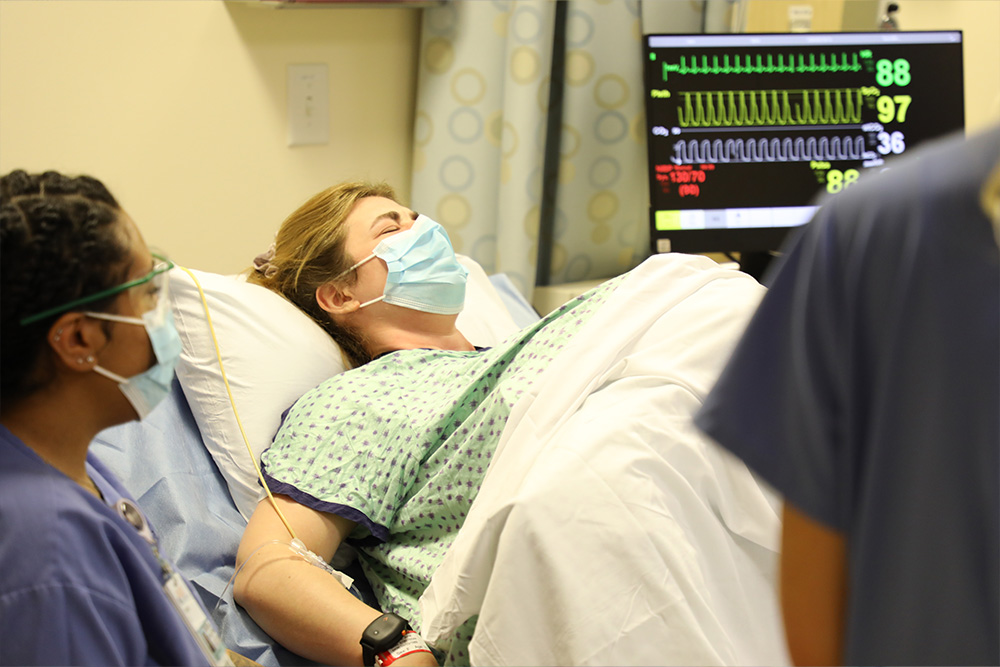
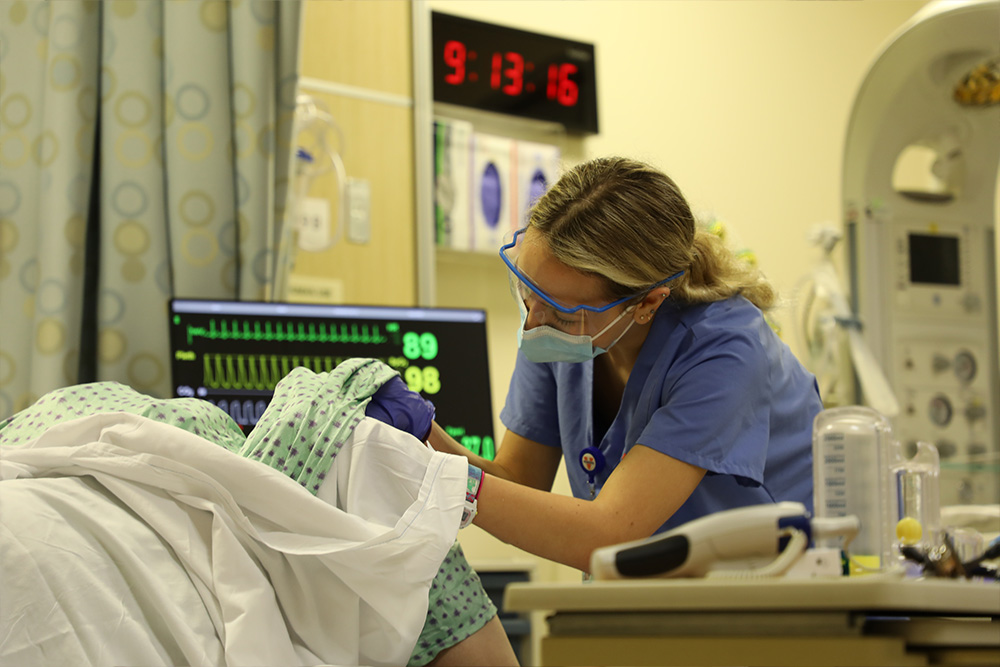
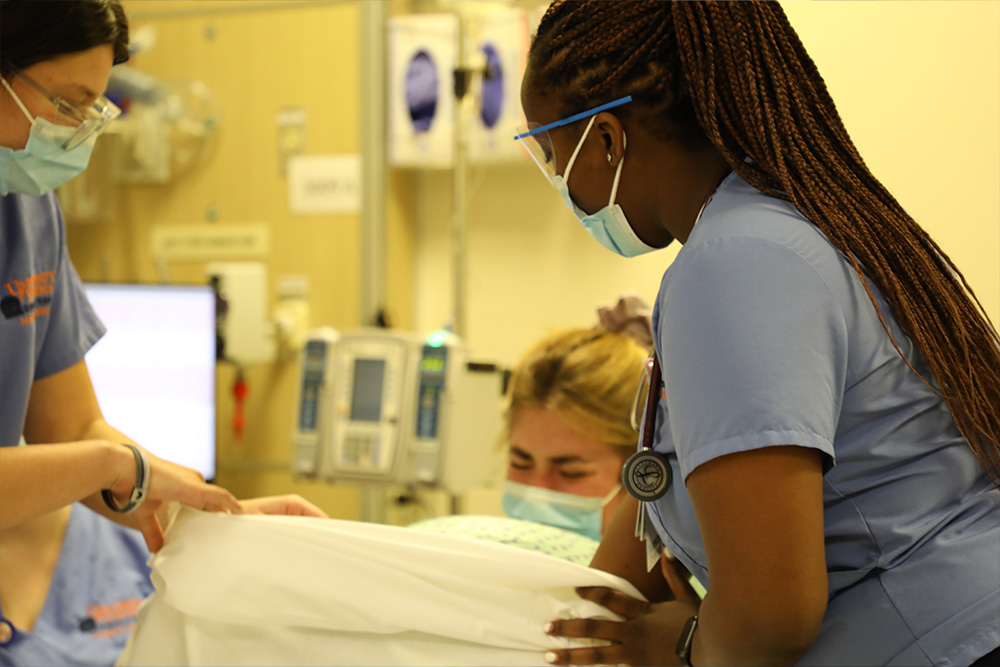

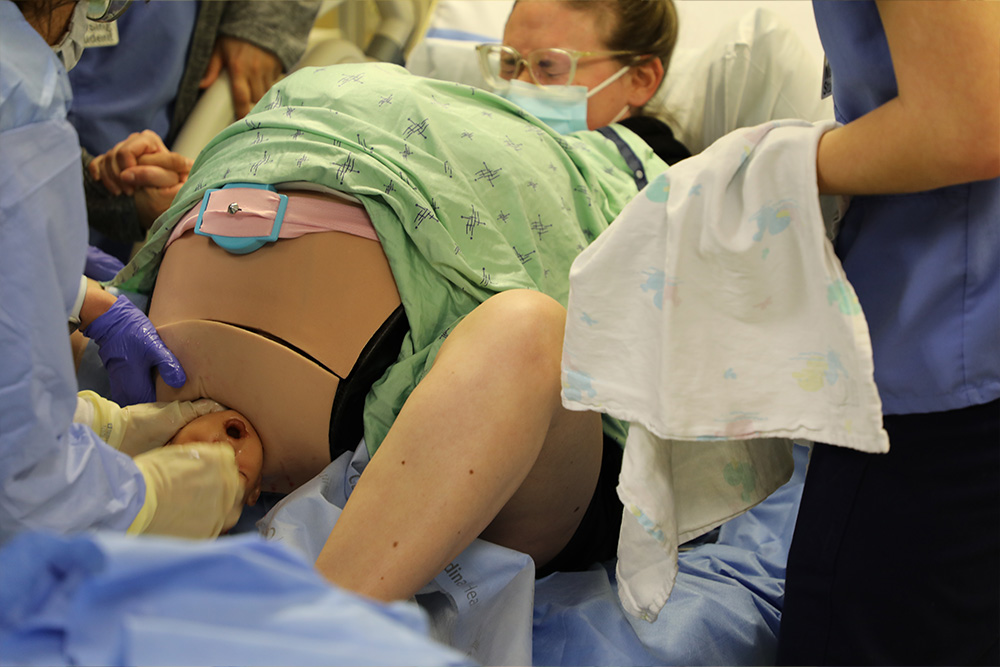
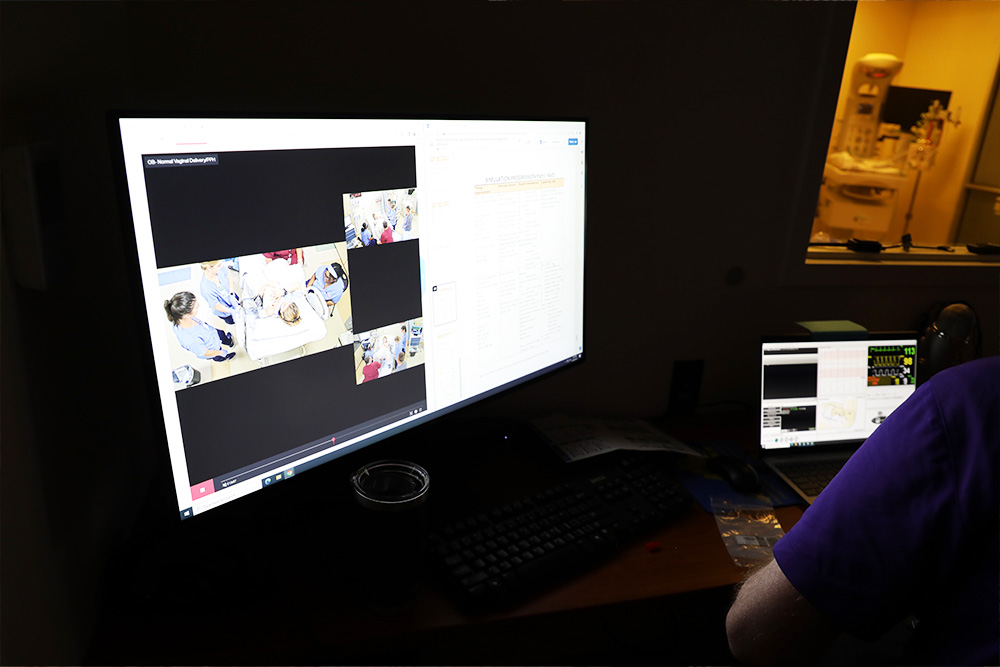

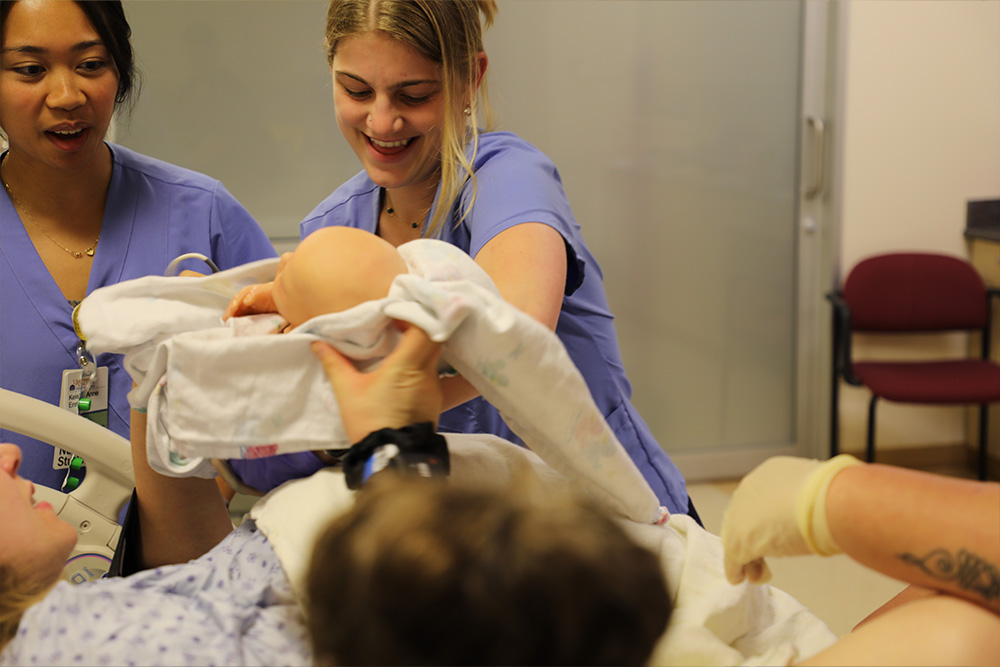
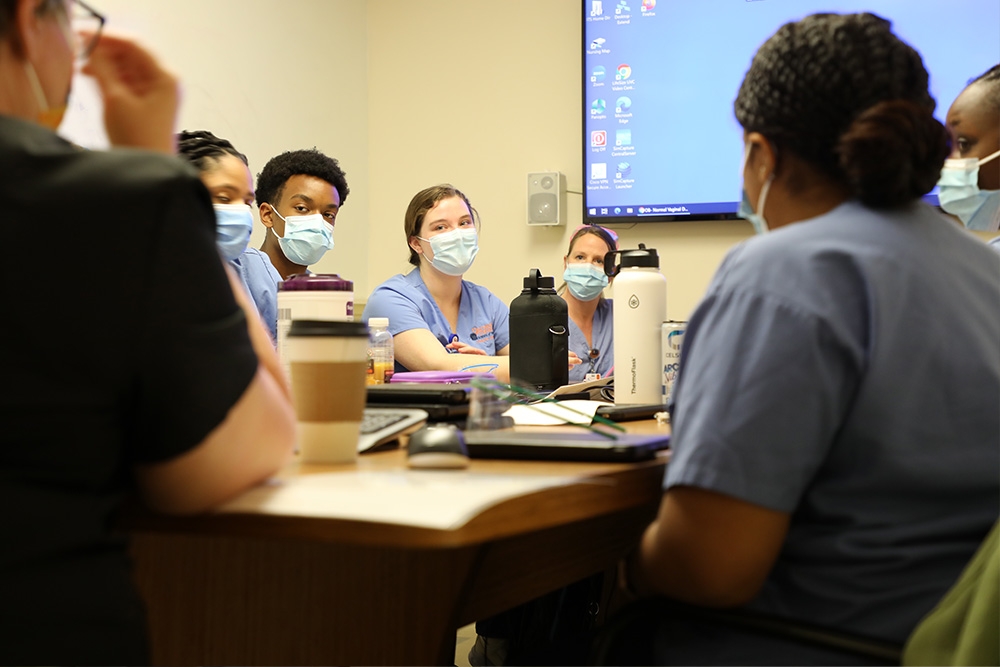
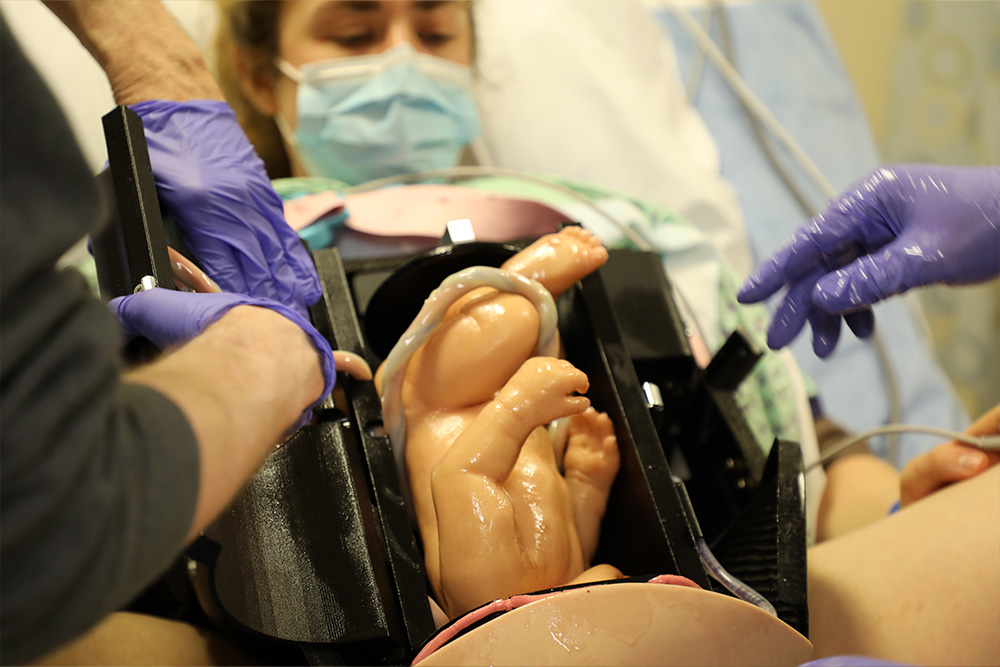
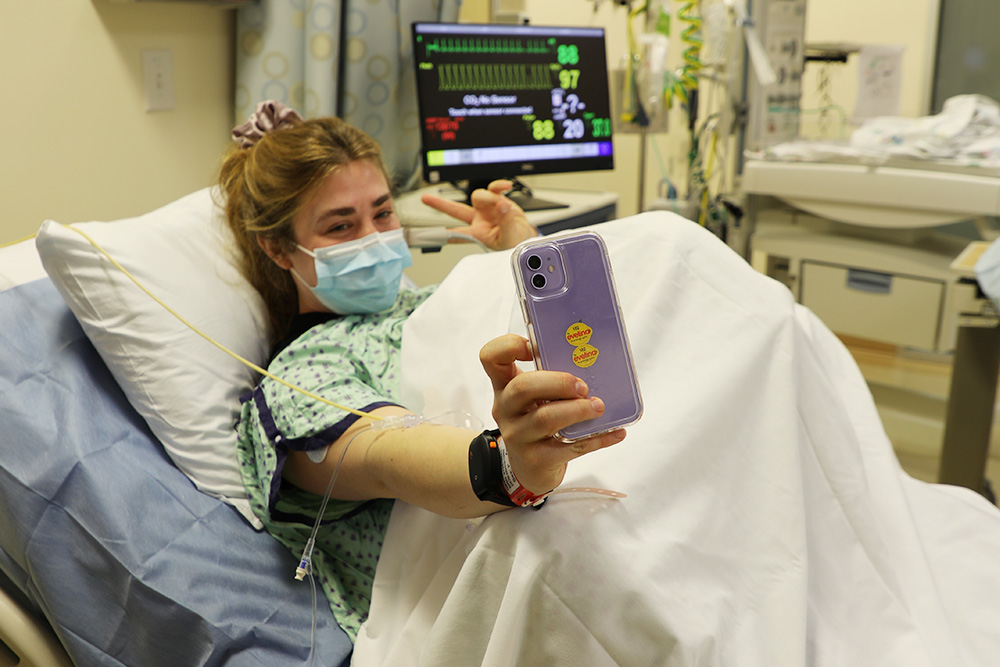
Flint—who did the new birthing sim just a week prior to observing her first real vaginal birth at UVA Medical Center during her labor and delivery clinical rotation—said she felt “prepared because you get to encounter the situation in a safe environment,” a sentiment that Diederich echoed.
“It’s great being able to practice the skills I hope to one day perform as a labor and delivery nurse without fear of actually harming anyone,” said Diederich. “Sim is just real enough that one can feed off the energy of the room that comes from a screaming patient and a baby that is being pushed out, but there is the safety net of working together with one’s peers and knowing that this is a learning experience at the end of the day.”
Enriquez—who’s seen both a vaginal birth and assisted in two Cesarean sections at UVA University Medical Center so far—agreed. “With the actor it really felt real,” she said, “and very applicable to what clinical and being on the floor is actually like.”


